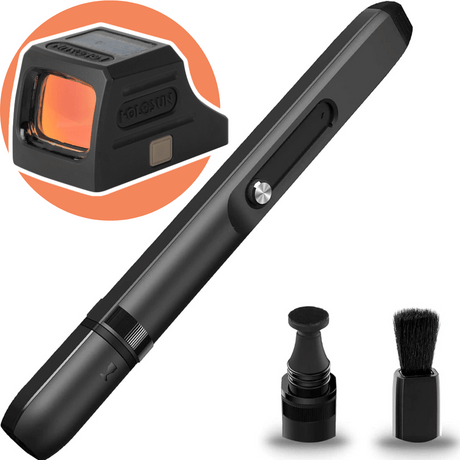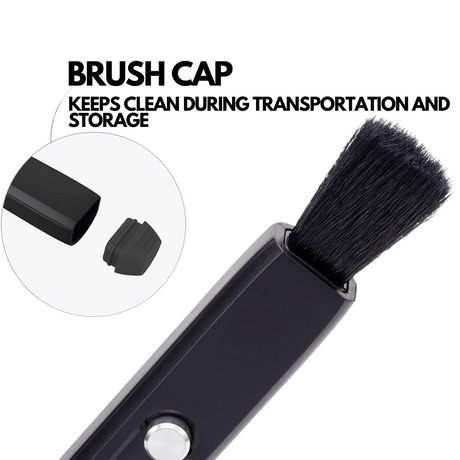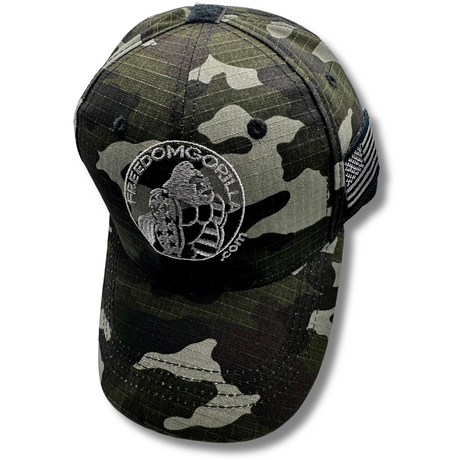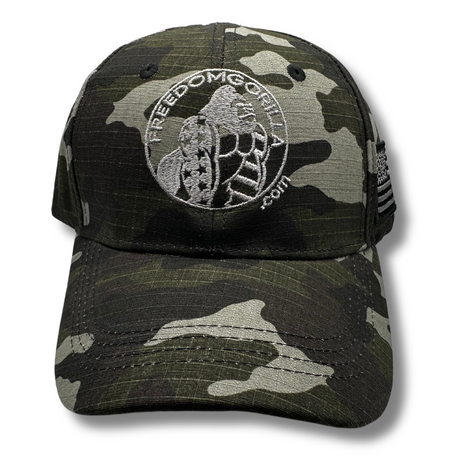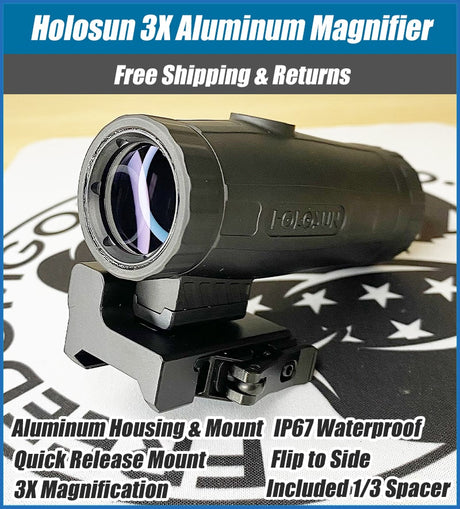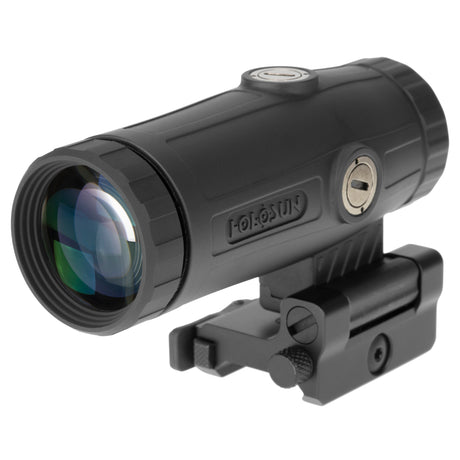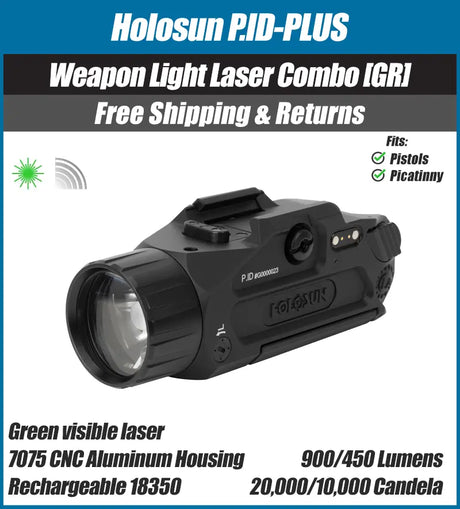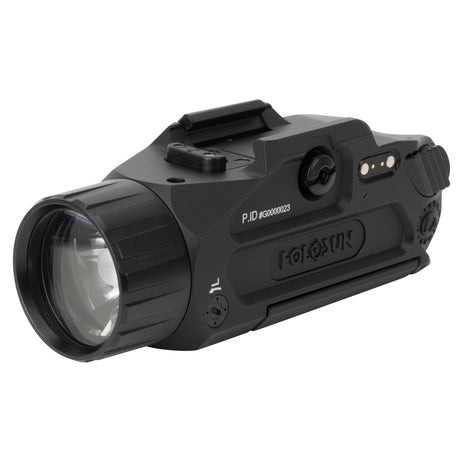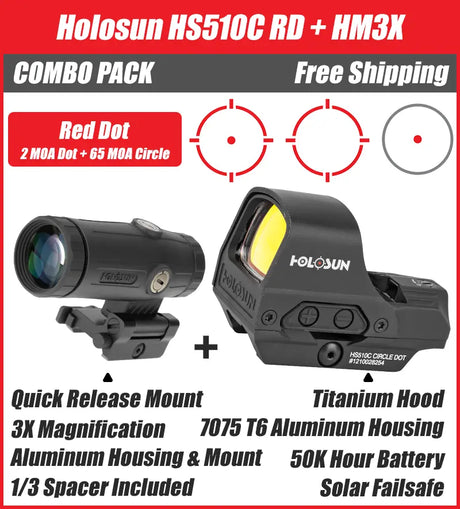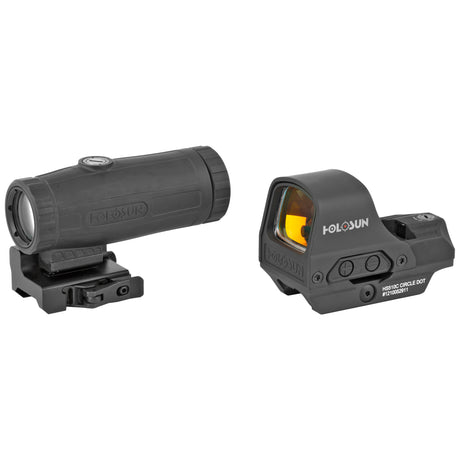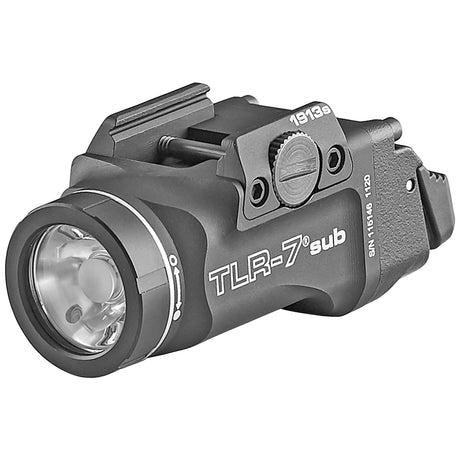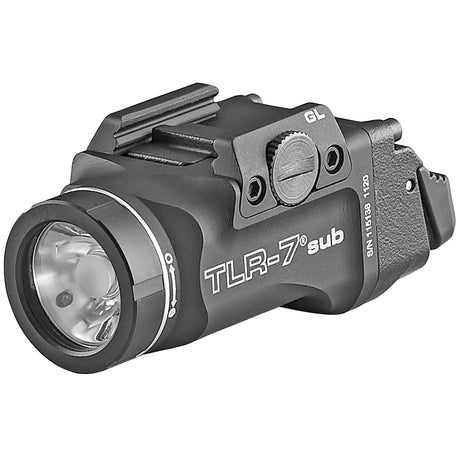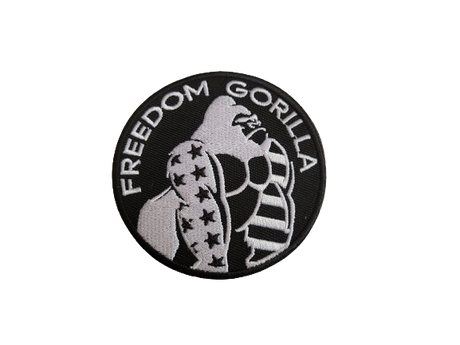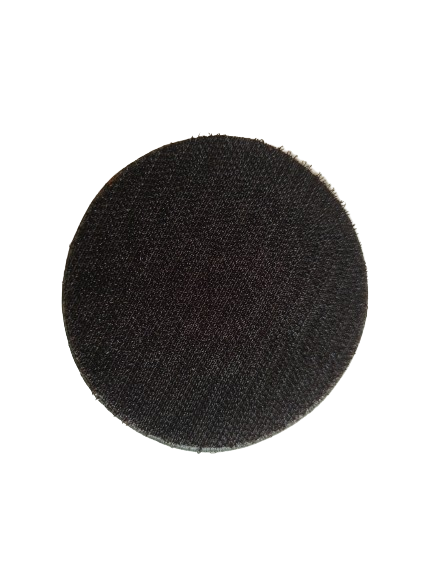Hey Freedom Gorillas, today we’re going to take a look at the Vortex Defender CCW. This is the concealed carry optic of the Vortex Defender red dots; it’s more compact compared to the Defender ST and Defender XL and has an RMSc footprint instead of a Delta Point Pro footprint.
This sight is designed for duty use and everyday carry use, perfect for subcompact and micro pistols that are common for edc use.
In this red dot review, we will cover the specifications for the Defender CCW and the Defender CCW Enclosed, the features, where this optic excels, and if it’s the right concealed carry or edc optic for you.
TLDR

The Vortex Defender CCW is a pistol optic optic with the option of either an enclosed or an open emitter. Both use a Shield RMSc footprint, making them ideal for concealed carry and everyday carry on subcompact and micro compact pistols.
The Defender CCW Open Emitter is a dot only reticle with the option of a 3 MOA dot or 6 MOA dot. The Defender CCW Enclosed Emitter has a muti reticle system with a 3 MOA dot and 32 MOA circle and can toggle between dot only, circle only, and both circle and dot.
Both versions are made with 7075 aluminum and feature a fast rack textured face, making the Defender CCW a durable sight for duty use as well. Both the Defender CCW Enclosed and Open use a top-mounted battery so you can replace the battery while the optics are mounted.
The Defender CCW Enclosed version has a solar failsafe that extends the battery life from 35k hours without the solar to 150k hours with the solar, and the open emitter has an expected 9.5k hours of battery life.
The Defender CCW Open Emitter and Defender CCW Enclosed has a Vortex Lifetime Warranty and at its reasonable price point is a great budget optic option.
Quick Specs Overview
Here is a breakdown of the specifications for the Vortex Defender CWW (open and enclosed) from the Vortex red dot lineup.
|
Starts at $249.99 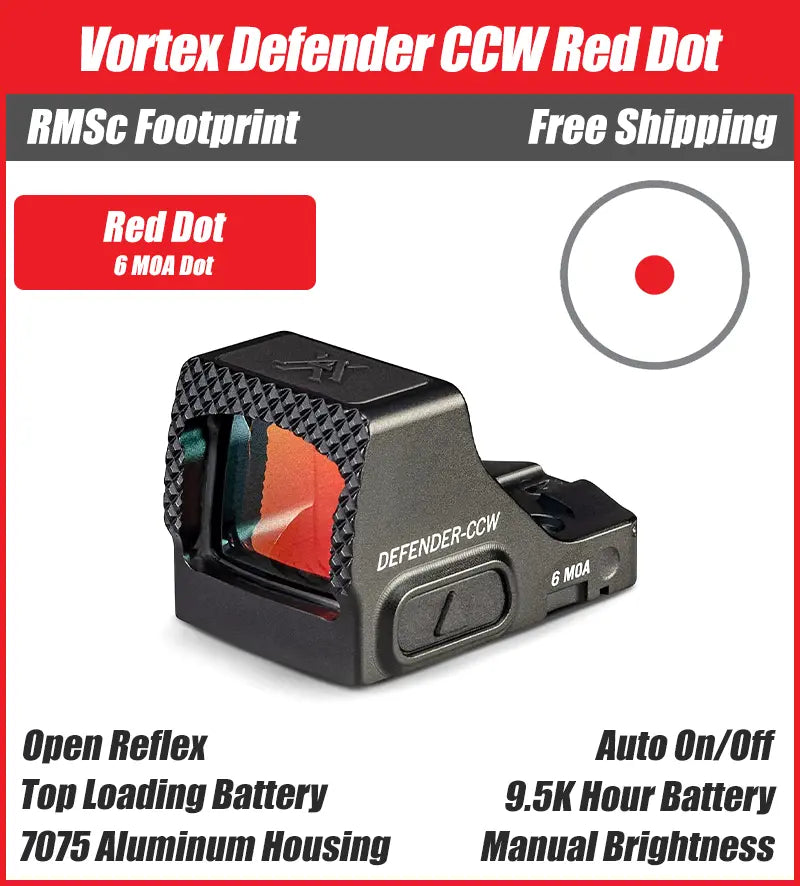
|
Starts at $299.99 
|
|
Defender CCW Open Emitter |
Defender CCW Enclosed Emitter |
|
|
Footprint Type |
Shield RMSc Footprint |
Shield RMSc Footprint |
|
Reticle Options (dot size) |
Option of 3 MOA Dot or 6 MOA Dot |
MRS with 3 MOA Dot and 32 MOA Circle |
|
Battery Type |
CR1632 Battery |
CR2032 Battery |
|
Solar Failsafe |
No |
Yes |
|
Battery Life |
9.5k Hours |
35k Hours Without Solar, 150k Hours with Solar |
|
Brightness levels |
10 Setting: 8 DL 2 NV |
12 Settings: 10 DL 2 NV |
|
Window dimensions and field of view |
20mm x 16mm |
20mm x 16mm |
|
Dimensions (LxHxW) |
1.6”x1”x1” |
1.6”x1.1”x1.2” |
|
Weight |
0.95oz |
1.30oz |
|
Housing material |
7075 Aluminum |
7075 Aluminum |
|
Key features |
|
|
|
Price point |
MSRP: $349.99 |
MSRP: $399.99 |
Design & Build Quality for the Defender CCW
The Vortex Defender CCW is built for concealed carry and everyday use and so the design and profile are going to make it the little optic of the Vortex Defender family. Let’s highlight some of the design benefits and what makes this a great concealed carry option.
Housing and Durability
The housing of the Defender CCW is made of durable 7075 aluminum, and its size makes it perfect for subcompact and low-profile firearms. The housing has great durability, is built to withstand water, is shockproof, and fogproof.
The Enclosed Defender CCW is especially durable with a completely enclosed 7075 aluminum housing that keeps debris, liquid, and dirt from the emitter. Both CCW optics have an aggressive textured face so you can rack it on any surface.
For improved durability the CCW also has a ShockShield insert, providing greater protection from shock and recoil.
Lens & Window

The benefit of the Vortex Defender CCW is the window size. The widow is going to be tall enough to give a great field of view, but not too tall to compromise its ability to be concealed comfortably.
The larger window helps with faster target acquisitions and both the enclosed and closed versions feature an aspheric lens which makes for a distortion-free sight picture and presents truer colors.
Controls & CCW-Specific Features
The CCW features two buttons (up and down) to adjust brightness. The Open Emitter version has the up button on the left side and the down button on the right while the enclosed version has both buttons on the left side which operate brightness and reticle adjustments.
The open emitter has a built-in backup rear wide sight while the enclosed emitter has a solar panel at the top of the housing.
Vortex Defender CCW Performance Testing
Dot Size & Clarity Performance
The Defender CCW comes with either a 3 MOA dot or 6 MOA dot, depending on your preference. The 3 MOA dot is going to be better for precision shooting and longer range shooting while the 6 MOA is better for quick target acquisition in a defensive situation.
The CCW also has a considerably large window size for a concealed carry optic which helps with target to target shooting since you have more field of view and can help with your target acquisition. For those with astigmatism, the larger dot (6 MOA) will be the better choice to avoid blur and for dot clarity.
Brightness & Light Conditions
The Defender CCW is designed for varying light conditions with 10 brightness settings total, 8 of which are for daylight and 2 are night vision compatible. The enclosed CCW optic has 12 brightness settings: 10 daylight and 2 night vision compatible.
Since it has varying settings for brightness, there will always be a crisp dot regardless of the lighting conditions. For both the enclosed and open versions of the CCW, there is a button lock feature to prevent unwanted adjustments from accidentally tapping the brightness adjustment buttons.
With the auto-off function and motion activation, the optic will automatically turn off after 10 minutes of inactivity, preserving battery, and will automatically turn back on when it senses motion.
CCW/EDC Use Case Testing
The Vortex Defender CCW comes in slightly larger than other concealed carry optics like the Holosun 407K and 507K, but the footprint and overall dimensions still make it a viable optic for concealed carry and everyday carry uses.
Many users like that it has a larger window than other concealed carry optics but others will point out how the larger profile can be a hindrance.
Durability and Zero Retention
In terms of durability, the CCW stands out with the textured face so you can rack the slide on any surface, and the 7075 aluminum housing. Many reviewers online have put this optic through multiple drop tests without shattering the window, breaking the emitter, or causing a shift in zero.
The CCW enclosed optic is going to provide more protection since it’s completely enclosed and can protect the emitter from dust, dirt, and liquid. Many users have put the CCW through thousands of rounds and multiple falls, finding that the optic held zero and retain
Battery Life & Power Management for the Defender CCW
The Defender CCW operates by battery; the open emitter uses a CR1632 battery and the enclosed emitter uses a CR2032 battery. Both use popular batteries, although the CR2032 is going to be the more popular battery.
The batteries for both the enclosed emitter and open emitter can be replaced while the optic is mounted on a firearm. The Defender CCW open emitter has a top-loaded battery that can easily be removed with a tool (included).
The Defender CCW enclosed optic uses a side loaded battery compartment, which adds some width to the right side, something to keep in mind when using for modern everyday carry or concealed carry.
The battery life for the Defender CCW open emitter is projected to be 9.5k hours while the enclosed option will be 30k hours. The enclosed Defender CCW also has a solar panel on the top of the housing which can increase the battery life to up to 150k hours. Realistically, battery life could fit within those ranges respectively for each optic, but this is also dependent on your go-to settings.
The CCW optic from Vortex includes some of the brand’s features for improved battery life like the auto shutoff with a 10 minute shutoff after inactivity and auto on with motion activation.
Defender CCW Footprint & Compatibility

The Defender CCW has a Shield RMSc footprint and comes with a Picatinny mount so that it can be mounted on carbines, shotguns, or anything that has a Picatinny rail. Let’s talk about what this optic can directly mount to and if you need an adapter plate so it can fit your pistol.
Understanding the Footprint
The RMSc footprint is commonly found on compact handguns, which are common for edc and ccw. The footprint consists of 4 recesses, one at each corner, to fit the recoil lugs, and two screw holes toward the back for fastening.
This makes the CCW a great optic for micro-compact and subcompact 9mm pistols
Direct-Mount Pistols
Since the Defender CCW has a RMSc footprint, it will fit all pistols that have a RMSc cut. Pistols that the CCW can mount directly to include:
- Glock 43X MOS
- Glock 48 MOS
- Sig Sauer P365XL
- Sig Sauer P365X
- Sig Sauer P365-XMACRO
- Springfield Armory Hellcat Pro
- Springfield Armory Hellcat RDP
- S&W M&P 22 Magnum
- S&W Equalizer
- Walther PPS M2
- Walther PDP Compact
- Walther PDP Full Size
- Canik Elite SC
- And more
Adapter Requirements
Since the Defender CCW only directly mounts to pistols that are compatible with the RMSc footprint, you may need an adapter for it to fit your pistol. Any pistol with a Deltapoint Pro Footprint like the Sig P320, the full size MOS footprint, or any other footprint will require an adapter.
Both the Defender CCW enclosed and open emitters come with 6 different screw sets to fit the optic to an adapter plate. Those screw sets include:
- M4x0.7-9.8mm for Glock and Springfield Armory Pistols
- M4x0.7-11mm for the Sig Sauer P320 and Canik Pistols
- 6-32-10.8mm for the S&W 2.0
- 6-40-9.8mm not the FN-509
- 6-489.03mm for Kimber, HK Models
Something to keep in mind is that when attaching the Defender CCW to an adapter plate for any platform, the deck height may be altered meaning you will need to rezero your optic. This may also mean you have to adjust for windage and elevation.
Don’t know what adapter plate to use? Check out our Adapter Plate Finder!
Subcompact Platform Focus
Because the CCW was meant to specialize in concealed carry, it is intended to match the footprint of subcompact, compact, and micro platforms. Therefore it has the most common footprint for subcompact pistols, the RMCs footprint.
For those who are considering an optic for concealed carry, the CCW is a great choice since it can fit a wide range of concealed carry pistols.
Choosing Between 3 or 6 MOA Dot
When it comes to the Defender CCW open emitter you will have the option of either a 3 MOA dot or a 6 MOA dot. When choosing between the 3 or 6 MOA dots, it’s important to consider how you want to apply the optic. If you are using the optic for further range shooting, be it target practice or competitive shooting, the 3 MOA dot causes less obstruction and allows for
For those who intend to use the CCW for concealed carry, the 6 MOA dot is more appropriate for close range since it helps with quick target acquisition at close range. If you are interested at better precision a smaller MOA dot, like the 3 MOA, is going to be a better choice, while a 6 MOA dot will help if you are focused on speed since it can help find the target more quickly.
If you deal with astigmatism, the 6 MOA dot is going to be a better option for you since the larger dot allows for less of a blurring effect and will help with clearly acquiring targets. The 3 MOA dot may lead to blurring and might be more difficult to find for those with astigmatism.
The CCW enclosed emitter only has the option of a 3 MOA dot and 32 MOA circle for its MRS. This means the enclosed emitter is beneficial for those who want to toggle between precision and speed.
For competitive shooters comparing larger window options, our Holosun 507 Comp vs Vortex Defender XL: A Detailed Comparison for Competition Shooters breaks down both models in depth.
Defender CCW vs Competition
So, the Defender CCW is a durable budget option, but how does it stack up against the competition? This is how it compares to other budget concealed carry options as well the more premium micro dots.
Defender CCW Vs. Budget CCW Optics
When up against other budget ccw optics like the Holosun 407K or 507K, the Defender CCW it comes in as a little pricier. The battery life isn’t as long as many budget optics like Holosun offers, which typically boast an average of 50k hours.
Where the Defender shines is its larger window size compared to other budget ccw optics like the Swampfox Sentinel II or the Holosun 407K. The Vortex Defender CCW also comes with a lifetime VIP warranty compared to the Holosun optics which have a 10-year limited warranty on the electronics.
Defender CCW Vs. Premium Micro Dots
Against premium micro dots, the Defender CCW is definitely more affordable, coming in at half the price of many of the premium concealed carry optics like the Trijicon RMR and Aimpoint COA.
The Defender CCW is great for everyday concealed carry while many of the other premium micro dots may be more appropriate for duty use and more extreme conditions, but the benefit of it being a budget optic is that it is perfect for civilian use.
The premium micro dots are, on average, going to boast a longer battery life. That being said, many of the premium micro dots like the Aimpoint COA and the Trijicon RMRcc are going to be made of 7075 aluminum as well. This means when looking at the durability of the CCW vs. those premium optics, they’re similar.
Defender CCW vs. Defender XL
The Defender XL is not much of a carry optic in the optics world, especially when up against its sibling the Defender CCW. The Defender XL has a larger sight window, which makes it too obvious for concealed carry, but makes it great for competitive shooting and training.
If you’re looking for a competition red dot, the Defender XL is the way to go, especially since it has a longer battery life (25k hours). Keep in mind, it also has a different footprint than the CCW, with a Deltapoint Pro footprint. This makes it not as compatible for subcompact and micro pistols. To understand the full Defender lineup, see our Vortex Defender ST vs XL comparison covering both full-size models.
Pros & Cons of Vortex Defender CCW
The Vortex Defender CCW has a lot going for it like its larger window, small profile, and durability.
Features that stand out with this model are the auto off function and motion activation as well as the button lock out feature, which can be handy if your optic’s buttons get pushed a lot when you are drawing for practice or the shooting range.
Pros
- Lifetime warranty
- Great durability
- Textured face for racking
- Large viewing window
- Low profile perfect for concealed carry and everyday carry
- Enclosed option
- Budget concealed carry optic
Cons
- The footprint can slightly overhang micro pistols.
- Less precise than optics with smaller dots (Holosun EPS)
- The enclosed option is heavier than other EDC and CCW optics
- Open emitter has a shorter battery life than the competition: 9.5k hours vs. 50k hours on average.
Who Should Buy the Defender CCW
The Vortex Defender is a great optic for concealed carry but it can also be a beneficial optic for other applications. This depends on your intended use of the optic and the conditions you prefer to shoot in.
The Defender CCW is Best For
The Defender CCW is best for those who want a concealed carry or modern everyday carry optic that is compatible with micro and subcompact pistols with a RMSc footprint. For those who are looking for a budget option, the Defender CCW red dot optic is a little optic that is an affordable option compared to sights like the Trijicon RMR or Holosun EPS.
This makes it a good option for first-time pistol optic buyers who don’t want to spend too much and want to test what works for them.
The CCW also only comes with a 3 MOA dot or 6 MOA dot, so those who work well with that dot size will benefit from this optic. If you prefer a MRS, the CCW enclosed optic has that option for those who like to switch between precision shooting with a dot only or for those who want to improve their speed with the circle.
Consider Alternative Optics If
You may want to consider an alternative pistol optic if you want something smaller and less noticeable. Although the optic is the smallest of the Vortex Defender lineup, it’s still slightly larger than other optics like those from Holosun.
If you are looking for better performance on the range or for competition instead of something for your everyday carry pistol, you may want to look at optics that specialize in target acquisition at different distances and help with speed. The Vortex Defender XL features a larger window that is great for competitive shooting and training on the range.
Final Verdict for Vortex Defender CCW
If you are looking for a good budget concealed carry red dot optic with a good sized sight window, the CCW of the Vortex Pistol Red Dot Sights is a great choice. For everyday carry users the CCW is built for harsher conditions and frequent use, and features the textured face, which many budget and premium optics lack.
This concealed carry optic is great for first time optics buyers and anyone who is looking for an optic that can directly mount to a subcompact or micro pistol with the RMSc footprint.
If you are looking for more affordable options, the Holosun 407K shares many of the features of the CCW and has the modified RMSc footprint, or K footprint. If you want more battery life, the Aimpoint Series is always an option, and for those who are more interested in competitive shooting, the Vortex Defender XL is a great choice out of the Vortex Defender red dots.
Find the Vortex Defender CCW here! We have both the classic open emitter as well as the Vortex Defender CCW enclosed emitter.
Thanks for reading, and if you have any questions don’t hesitate to reach out!


